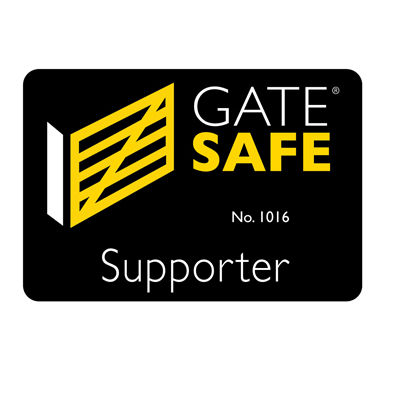
Professional electricians are required to undertake the final stage of an automated gate installation, i.e., supplying power to an automated gate, usually at the request of either the gate system installer, developer or property owner. An electrician may also be asked to make adaptations to an automated gate system, for example replacing or adding a component, such as changing a motor, sensors or incorporating an intercom system.
However, many electricians may not be aware of the fact that as the last person to touch the gate, they effectively assume responsibility for the safety of the installation. Automated gates are classified as machines under the EU Machinery Directive and in the UK, The Supply of Machinery (Safety) Regulations, brings the European Machinery Directive (currently 2006/42/EC) into UK criminal law.
In the event of any accident or fatality, any work undertaken by the electrician will be under intense scrutiny and if there is any evidence to indicate negligence on their part in terms of determining that the gate is a safe and legally compliant installation, they will be liable to prosecution. This could have dire financial, legal and moral implications.
This ruling applies not only to new installations but also in situations where an electrician may be called upon to undertake works on an existing automated gate system – the same obligation exists that it will be his / her responsibility to leave site knowing that the gate is 100% safe. Or, if there is any doubt, to put the gate back into manual operation to safeguard potential users.
Courts have handed down fines relating to automated gate accidents ranging from under £10k to £550k, and there has also been a case where an installer was given a prison sentence on the grounds of manslaughter by gross negligence so any electrician should think carefully before they agree to work on this type of project.
Electricians intending to work on automated gates should take the necessary specialist training so that have the requisite knowledge to appreciate the factors that need to be taken into consideration to deliver a safe gate. They must also be aware of the action required to mitigate any identified risks to safety.
At the most basic level, electricians should check:
-
that the gate has two types of safety devices fitted first and foremost this MUST include non-contact safety i.e., photocells, light curtains or laser scanner, these must be positioned correctly and in the case of photocells, represent the sufficient number to deliver the required protection. In addition, the gate should feature appropriately located and correctly specified pressure edges which will ensure that in the case of a gate coming into contact with a person or object, it will stop and revert away from the hazard in both the opening and closing phase
-
that the gate is UKCA marked
-
that there are no sizeable gaps around the gate, the gate posts or around devices associated with the gate which could be deemed to as possible trap or crushing points – gaps must not exceed 100mm
-
swing gates should feature a minimum of three hinges to prevent the gate falling in the event of a hinge failure – and / or it should feature a suitably robust gate tether
-
multiple physical stops should be fitted to a sliding gate in both the open and closed position to negate the risk of the gate over travelling
-
checks should be made in terms of the physical surroundings of the gate setting and how these can impact on the safety of the installation, for example, are there any potential climbing aids in close proximity to the gate? Does the gate open onto a brick pillar creating a pinch point?
-
the gate should feature visual signs that is it automated. An audible alarm may also be fitted
-
the gate owner must be aware and trained on what steps need to be taken to put the gate into manual operation – and where to locate the manual operation key
It is not uncommon for an electrician to be asked to fit an automation kit to a manual gate. However, electricians should think very carefully before agreeing to this type of assignment. It is widely known that many of the kits being sold on the market are unsafe, non-compliant and lacking in the essential appropriate guidance to deliver a safe installation.
Finally, a safe gate is not wholly dependent on fitting the appropriate safety devices. Safety should be taken into consideration at the design stage, rather than relying on retrofitting safety features to mitigate inherent design faults. Gate Safe has developed a series of guides which outline the myriad design factors that play a pivotal role in determining the safety of an automated gate installation, visit www.gate-safe.org/gate-safety-by-design.
Electricians interested in improving their knowledge of automated gate safety should attend an IOSH approved Gate Safe training course. This half-day course is run by Gate Safe’s Technical & Training Manager online, in groups of no more than six. Visit www.gate-safe.org/training to reserve a space on the next course (training runs every week).
